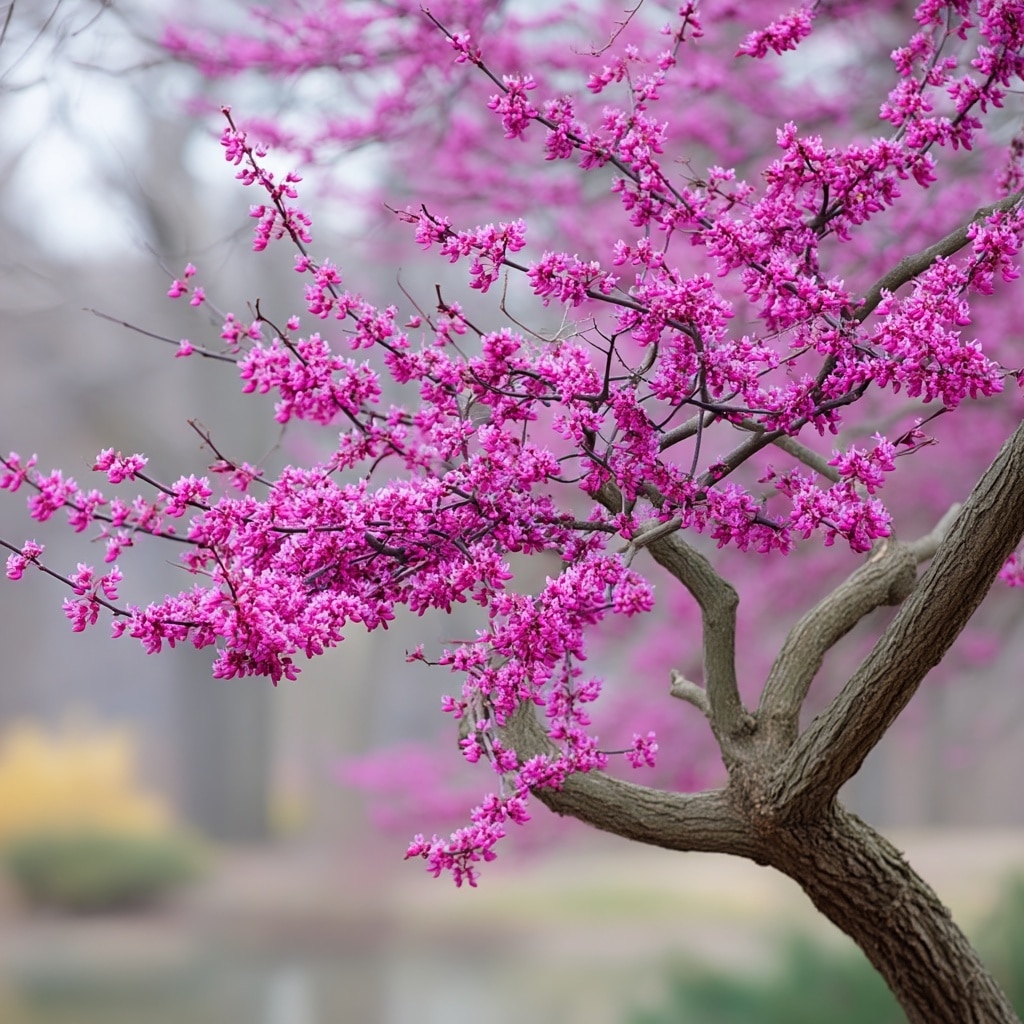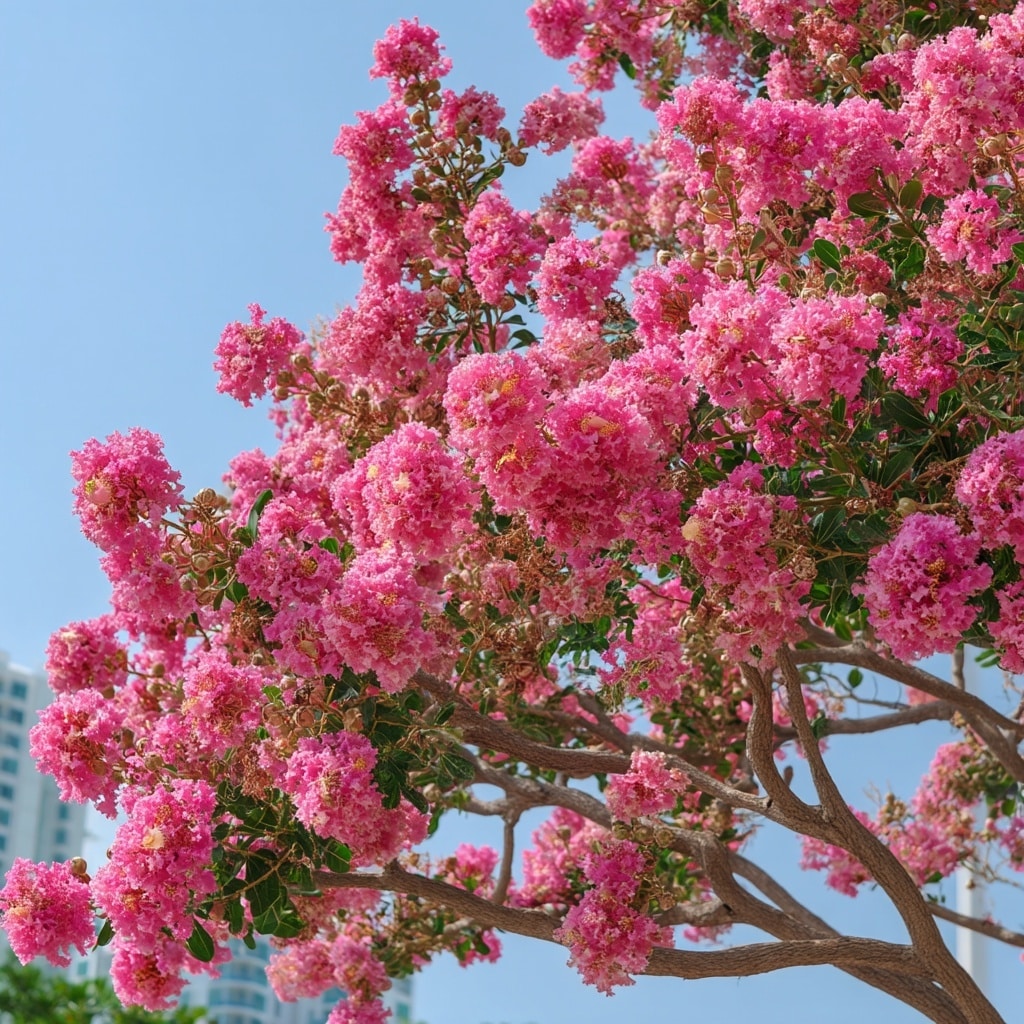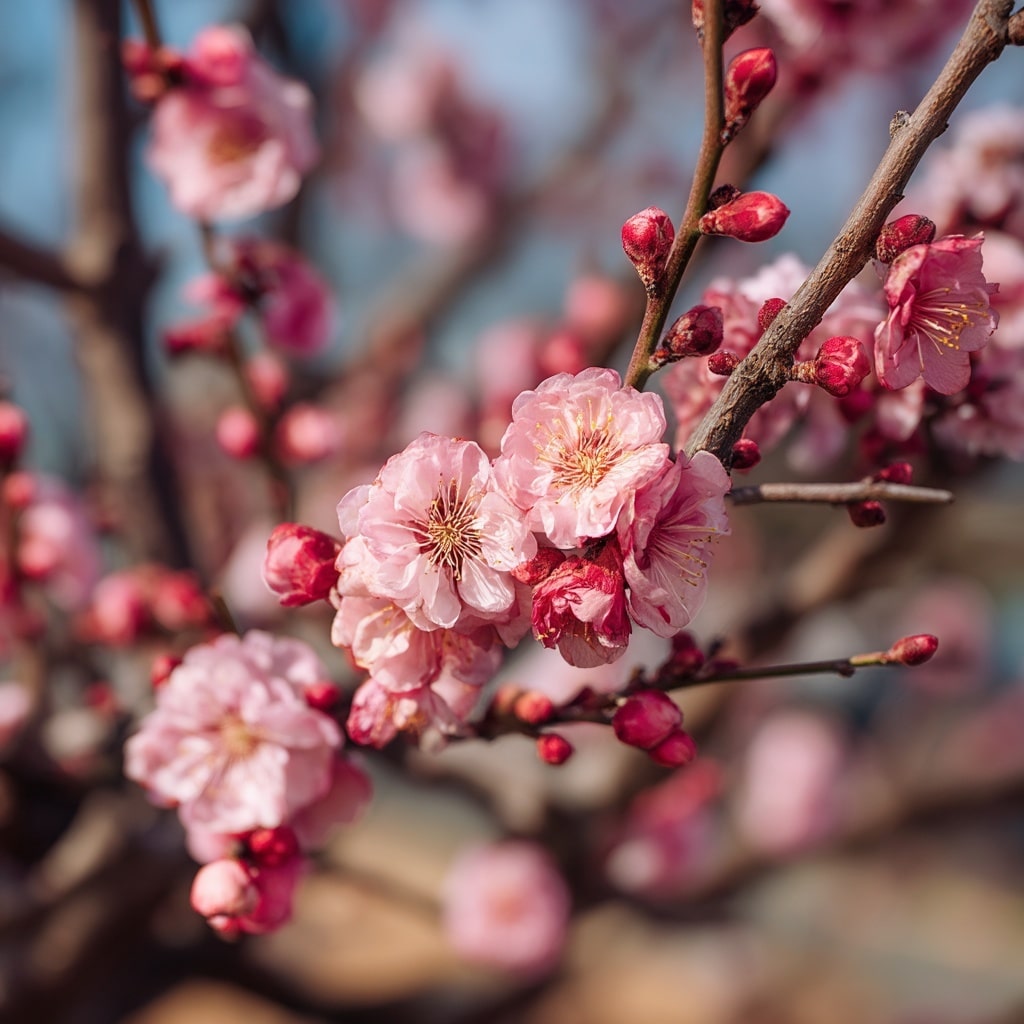A pink tree in full bloom is one of the most uplifting sights of spring. Whether it’s the first burst of color after a gray winter or a long-awaited signal of warmer days, pink blossoms have a way of transforming an ordinary yard into a cheerful garden retreat. From soft pastel tones to vibrant rose shades, these flowering trees offer something for every landscape style.
In this guide, we’ll look at six beautiful pink trees that brighten spring gardens with color, fragrance, and charm. Each variety brings its own personality—some bloom early and fade quickly, while others hold their flowers well into summer. No matter your climate or space, you’ll find a perfect match for adding a touch of pink elegance to your yard.
Table of Contents
1. Japanese Flowering Apricot (Prunus mume)
If you’re searching for a pink tree that signals the very first whispers of spring, the Japanese Flowering Apricot is a stunning choice. This ornamental beauty often blooms as early as February, filling the air with its light, spicy fragrance even before winter fully fades. Its clusters of double pink blossoms bring warmth to chilly days and create an eye-catching display against bare branches.
Compact yet graceful, this tree grows between 10 and 20 feet tall, making it ideal for smaller gardens or as a focal point near patios and walkways. It thrives best in full sun and well-drained soil, rewarding you with a burst of color when most plants are still dormant. Gardeners love varieties like ‘Peggy Clark’ for their vibrant petals and upright growth habit—a classic sign that spring has arrived.
2. Flowering Cherry Trees (Cerasus serrulata)

Few sights capture spring’s magic quite like a pink tree covered in cherry blossoms. Flowering cherry trees are beloved for their range of pink hues—from the deep rose of ‘Okame’ to the pale blush of ‘Yoshino’ and the rich, full blooms of ‘Kwanzan.’ These trees light up gardens and streetscapes, often marking the height of the spring season with their cascading petals and soft fragrance.
Growing 12 to 30 feet tall, cherry trees thrive in full sun and well-drained soil. Once established, they need little care beyond seasonal pruning and moderate watering. Their graceful branches and delicate blooms make them perfect for framing garden paths or creating a show-stopping centerpiece. Plant one where you can enjoy its fleeting blossoms up close—because when a cherry pink tree blooms, it truly transforms your landscape.
3. Saucer Magnolia (Magnolia × soulangeana)

For those who want a pink tree that delivers both elegance and drama, the Saucer Magnolia is a perfect match. Before its leaves even appear, this small ornamental tree bursts into massive tulip-shaped blooms in shades of pink and purple. Against bare branches, the flowers look almost like lanterns glowing in the early spring light—creating one of the most breathtaking displays in any garden.
Reaching around 15 feet tall, the Saucer Magnolia is ideal for compact spaces or as an accent near entryways and patios. It performs best in full sun and slightly acidic, well-drained soil. Once established, it needs minimal care beyond light pruning after flowering. With its early-season charm and long-lasting blooms, this pink tree turns any yard into a serene spring sanctuary.
4. Eastern Redbud (Cercis canadensis)

The Eastern Redbud is a native pink tree that brings a natural, woodland charm to spring landscapes. Long before its heart-shaped leaves appear, clusters of small magenta-pink flowers cover every branch, lighting up the garden with cheerful color. These blooms often emerge in early spring, just as the rest of the landscape is waking up, making the Redbud a favorite among gardeners seeking early-season vibrancy.
Typically growing 15 to 25 feet tall, the Redbud thrives in part sun to light shade and adapts easily to different soil types. Its arching branches form a soft, rounded canopy that looks beautiful in both formal and naturalized gardens. Because it’s drought-tolerant and low-maintenance once established, this pink tree is an excellent choice for homeowners who want beauty without fuss.
5. Pink Flowering Dogwood (Cornus florida)

The Pink Flowering Dogwood is a classic pink tree that adds beauty to every season, not just spring. In mid to late spring, its soft pink blossoms unfold against a backdrop of fresh green leaves, creating a gentle yet striking focal point. As the months pass, it continues to impress with lush summer foliage, brilliant red fall color, and clusters of red berries that attract songbirds through winter.
Growing between 15 and 30 feet tall, this graceful tree performs best in partial sunlight—especially beneath the filtered shade of larger hardwoods or pines. It prefers well-drained, slightly acidic soil and rewards patient gardeners with year-round charm. Beloved for its elegance and resilience, the Dogwood remains one of the most timeless pink trees you can plant, offering a living display that evolves beautifully from season to season.
6. Crepe Myrtle (Lagerstroemia indica)

When it comes to a pink tree that delivers months of color, the Crepe Myrtle stands in a class of its own. Unlike most spring bloomers, it keeps flowering well into summer, covering its branches with clusters of pink blossoms that shimmer in the sunlight. Its smooth, peeling bark and gracefully arching limbs ensure it remains attractive even after the blooms fade, giving your garden year-round visual interest.
Depending on the variety, Crepe Myrtles can range from compact shrubs to stately trees up to 25 feet tall. They love full sun and thrive in well-drained soil, making them a dependable choice for gardeners in warmer zones. Once established, they’re drought-tolerant and pest-resistant, offering easy care without sacrificing beauty. For anyone looking for a pink tree that’s as tough as it is showy, the Crepe Myrtle is a must-have.
Conclusion
Adding a pink tree to your landscape is one of the simplest ways to welcome spring with color and cheer. Whether you prefer the early blooms of the Japanese Apricot, the romantic blossoms of the Cherry, or the long-lasting beauty of the Crepe Myrtle, each of these six trees brings its own charm and seasonal delight. With the right planting spot and a little care, you can enjoy their pink petals year after year, transforming your yard into a peaceful, blooming retreat that celebrates nature’s renewal.


